Illustrated and fun books that help kids under 7 laugh, learn, and imagine their way into healthy money habits.
Are you looking for some of the best books to teach young children about money? We and our kids have done the leg work for you! We’ve reviewed books that teach the basics of money management all the way through investing for the future.
Economics has never been considered thrilling reading, especially for children. Because many money habits are established by the age of 7, it is important that we introduce money concepts early.
Thankfully, there is a growing movement to mandate financial literacy education in schools. Unfortunately, this introduction is not until high school. And that’s way too late.
Editorial Note: We earn a commission from partner links on My First Nest Egg. Commissions do not affect our editors’ opinions or evaluations.
Table of Contents
- What Parents Are Looking For
- Just Saving My Money
- Rock, Brock, and the Savings Shock
- Save It!
- Paper or Plastic (Money Monsters)
- What is Money
- The Four Money Bears
- Isabel’s Car Wash (Money Tales)
- If You Made a Million
- A Boy, a Budget, and a Dream
- Lily Learns about Wants and Needs
- Little Daymond Learns to Earn
What Parents Are Looking For
Parents of young children are left trying to find age-appropriate tools to teach kids about money. This is becoming ever harder as the world becomes more and more cashless. The piggy bank is becoming obsolete.
Here is our list of the top ten books to introduce financial concepts to kids 7 and under.
The authors of these books about money are financial literacy enthusiasts, long-time children’s authors, and our Country’s top economists.
These fun, simple and easy-to-read books make complex concepts easy and age-appropriate for even the youngest children. The authors have crafted silly stories starring furry protagonists, bickering siblings, and an understanding of what kids really want – toys. Bunnies, critters and squirrels are apparently better at saving than most Americans!
Perhaps the adorable characters in these brightly illustrated books will encourage human children to save, spend and be generous.
To aid us in discovering the best books to teach children under the age of seven about money, we enlisted the help of a persnickety book critic – a six-year-old.
Just Saving My Money
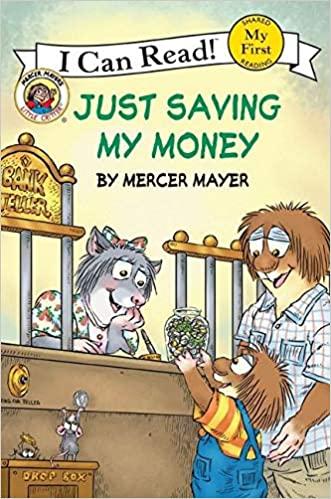
Author:
Mercer Mayer
Age:
For kids 6 and under.
Key Concept:
Associating working with earning, Saving, Delayed gratification
Story Summary:
Little Critter’s skateboard breaks and he needs to earn money for a new one. He does chores and still not having enough money to buy a new skateboard, opens a lemonade stand. He also opens a savings account.
Mom Review:
Who doesn’t love Little Critter? He taught kids to clean their room, control their temper, help around the house and now how to save money. Just Saving My Money is perfect for emerging readers.
My 6 year-old read it by herself several times. “Just saving My Money,” does a great job of connecting effort with earning. I also love the message that when Little Critter’s old skateboard broke, his parents were not going to replace it automatically, but that he needed to earn a new one.
Best of all little Critter learns the value of delayed gratification. “Dad, I am so glad I saved my money!” By waiting and saving, Little Critter decided, that instead of the skateboard he originally started saving for, that the robot he found at the store was what he truly wanted.
Kid Review:
I could read this book by myself. I like this book. I would have bought the skateboard, but he worked hard and saved and now he has a robot. I want to save for a skateboard.
Rock, Brock, and the Savings Shock
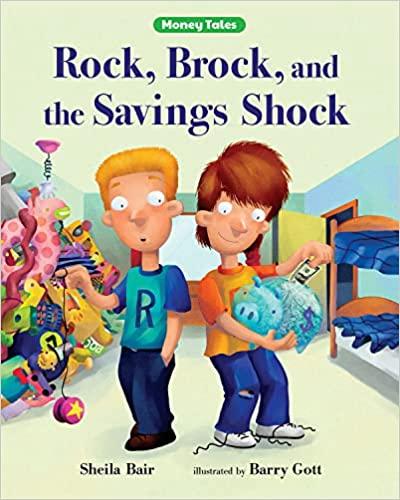
Author:
Sheila Bair
Age:
For kids 7 and under.
Key Concept:
Delayed Gratification, Compound Interest, Planning Your Spending
Story Summary:
Rock, Brock and The Savings Shock is about twin brothers, Rock and Brock, earn money and Grandpa matches every dollar they save. Rock spends every dollar he earns on trinkets, while Brock saves every dollar. At the end of the day, Rock is left with a roomful of broken junk and Brock has $512.
Mom Review:
Let’s start with the author, Sheila Bair – named the second most powerful woman in the world by Forbes Magazine.
She was the Chair of the FDIC during the financial crisis of 2008 and a lifelong financial literacy advocate.
Needless-to-say this woman is an expert in financial matters and she happens to be able to rhyme.
While I have not been able to find a bank that gives as generous terms as grandpa, this book illustrates the power of compound interest working in your favor. Rock, Brock, and the Savings Shock is great for a younger reader, but it even affected my 10-year-old, who after reading this book, refused to buy himself specialty socks saying “I’ll never be a millionaire spending $14 on socks.” For kids 7 and under (maybe even older).
Kid Review:
Rock spent too much money. I think Brock is smarter. The pictures are funny and I found his dog in all the pictures. Mom needed to help me with some words, but I could read a lot of it.
Save It!
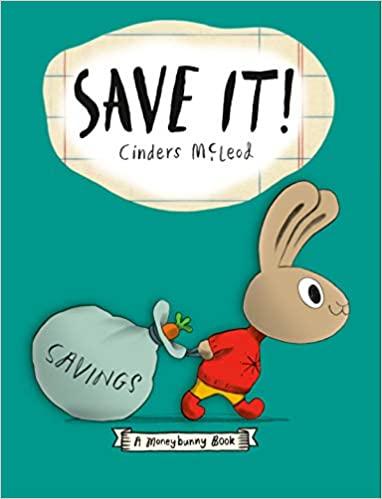
Author:
Cinders McLeod
Age:
For kids 4 and under.
Key Concept:
Associates working with Earning
Story Summary:
Honey needs to earn carrots in order to save for something that she really wants.
Mom Review:
Honey earns carrots babysitting her siblings. All she wants is a little peace and quiet. After being denied her own residence by her father, she decides to save for a play house for some much-needed privacy. This book is great for very young children to understand the basic concept of savings. I would actually recommend this as a first book on the topic. Best for kids 4 and under.
Kid Review:
I read this book twice by myself and once to mom with no mistakes. Honey likes privacy like my older sister. I wish I could buy a playhouse with carrots. My mom says a playhouse costs more than $100. I am saving for the Batmobile.
Paper or Plastic (Money Monsters)
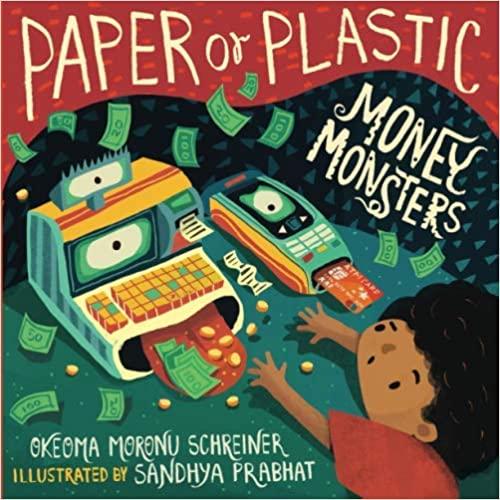
Author:
Okeoma Moronu Schreiner
Age:
For kids 6 and under.
Key Concept:
Credit cards vs. cash
Story Summary:
Kai goes shopping with dad at the supermarket. He learns the difference between paying with cash and credit cards.
Mom Review:
Credit cards can be confusing for little kids. This adorable book plays on the famous check-out question “paper or plastic?” in compounding the already difficult to understand concept of credit cards. If your kids believe that your credit card is a magic substitute for money, this is a great book to help illustrate the reality of how a credit card works. With a simple explanation that a credit card is for convenience and still requires you to pay actual money to someone each month, kids can begin to make sense of a topic many adults struggle with.
Kid Review:
I’m not ready for a credit card. My mom always asks for plastic at the supermarket because we use it to pick up our dog’s poop. I liked the pictures in the book. It also taught me the name of money in other countries. I could read this book by myself except for a few words.
What is Money
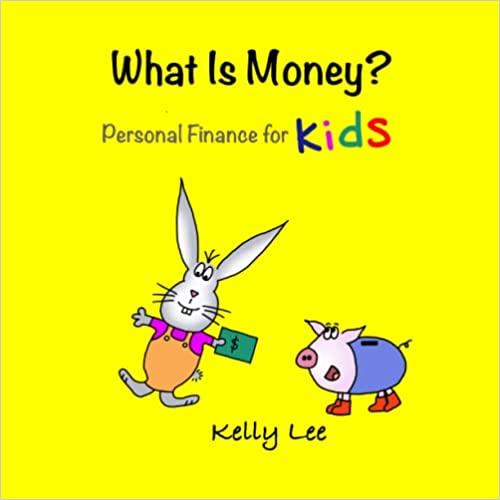
Author:
Kelly Lee
Age:
For kids 4 and under.
Key Concept:
Introduction to money
Story Summary:
Charlie the bunny explains what money is and where it comes from.
Mom Review:
This adorable book is perfect for children under 4 to introduce the concept of money. The illustrations are fun and colorful. Kids are introduced to the idea that money should be sorted into categories for spending, saving and giving. It even illustrates the concept of a budget. The best part is that the book is short enough to read twice before bedtime. Best for Pre-school aged kids.
Kid Review:
I knew most of this stuff. Its kind of little kiddish. The laughing cookie was funny. This book was easy for me to read by myself.
The Four Money Bears
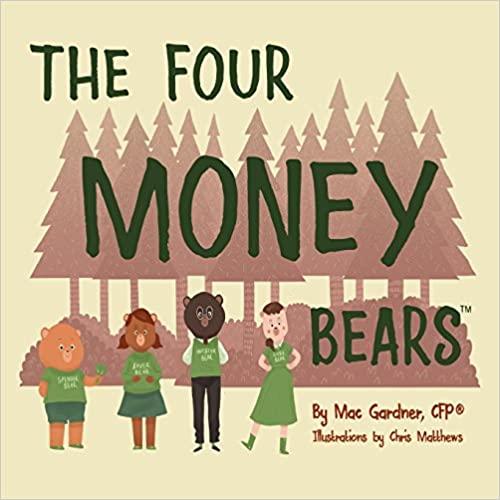
Author:
Mac Gardner, CFP
Age:
For kids 7 and under.
Key Concept:
Budget, Saving, Spending, Saving, Giving
Story Summary:
Mama and Papa Bear tell their kids the story of the Four Money Bears to illustrate the importance of a budget.
Mom Review:
Meet Spender Bear, Saver Bear, Investor Bear and Giver Bear. Each bear gives insight into the balance we need to properly manage money. This book surpassed my expectations. I recently read it to a class of 30 First Graders who were engaged from the first page. I like that this book takes a holistic approach to teaching about money. Spender Bear never has money for emergencies or for the future, but Saver Bear never has fun or practices generosity. This book sets the stage for why a budget is necessary. The illustrations are great.
Kid Review:
This was my favorite book. I like Investor Bear best. Its cool that he makes more money from what he has. But, you can’t be like just one bear. You have to be a little of all of them. My friend said that Giver Bear looks like a pig.
Isabel’s Car Wash (Money Tales)
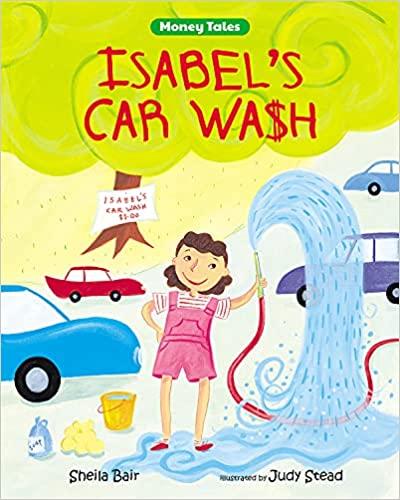
Author:
Sheila’s Car Wash
Age:
For kids 7 and under.
Key Concept:
Emerging entrepreneur
Story Summary:
Isabel raises money and starts a car wash.
Mom Review:
Here’s another book by Sheila Blair. This book is a little more complicated as it really is a book about entrepreneurship and not just about money. This is not your typical open a lemonade-stand and instantly profit story, Isabel needs to raise money for a doll. She only has $.50 to start. Seeing she can’t even afford the supplies to have a car wash, she gets her friends to invest in her business. I’m not sure I love the idea of chasing friends down for an investment, but it makes it clear that starting even a simple business requires capital. I thought this book would go over my 6-year old’s head, but she totally understood it.
Kid Review:
Isabel made a lot of money washing cars. My dad said that home car washes waste more water than the ones at the gas station, so I am not allowed to do one. I learned you need money to start a business. It’s called an investment.
If You Made a Million
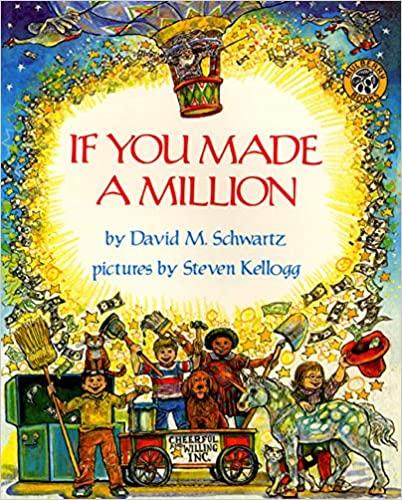
Author:
David M Schwartz
Age:
For kids 7 and under.
Key Concept:
Coins, valuation, interest
Story Summary:
Isabel raises money and starts a car wash.
Mom Review:
This book was written in the late 80’s, so it is the oldest book on the list. It is nostalgic of the books our parents read to us. While cash and coins are becoming obsolete, it was shocking when I realized my youngest could not tell the difference between a nickel and a dime. Depicting each coin and then putting in cute fun facts like a million dollars would be equal to a stack of pennies ninety-five miles high, I could see the wheels turning in my daughter’s head. This book clearly has not been updated to reflect inflation with a moon trip only costing $1,000,000.
Kid Review:
The nickels are the big ones and the dines are the little ones even though the dimes are worth more. It doesn’t seem smart. Coins are heavy and my mom says that money has germs on it. That’s why she uses Venmo a lot.
A Boy, a Budget, and a Dream
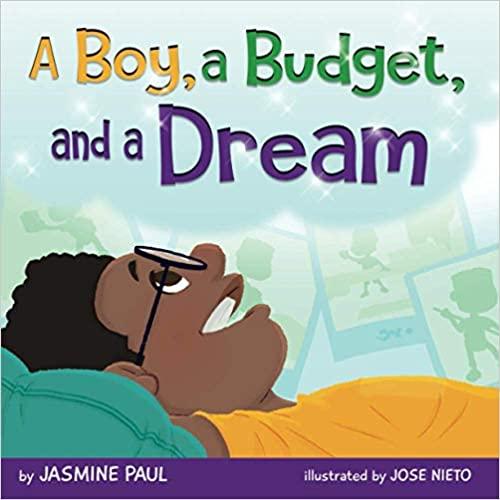
Author:
Jasmine Paul
Age:
For kids 7 and under.
Key Concept:
Budget, goals, choice, wants vs. needs
Story Summary:
Joey wants a lot of things and thinks he has enough money for all of it. When he realizes that he spent too much, he has to make choices and sacrifices to get the thing he really wants – to attend STEM camp.
Mom Review:
This is a new author and a newly published book, so it is not on a lot of radars, but this may be one of my favorite books for beginning a financial literacy journey with kids under 7. Joey wants to go to STEM camp. Realizing that he spent too much of his money he establishes a budget to save for the down payment. This book feels realistic, is modern, cute, and informative. My favorite part was watching Joey prioritize how he would spend his money. He has to choose between a few things he wants. Making choices is so important and I am glad that this book highlights the importance of prioritizing wants.
Kid Review:
This book is good. Kass saves her money. My brother and sister save their money too. I like to spend mine, but I am trying to save more. Sometimes when I am saving for something, I decide I want something else.
Lily Learns about Wants and Needs
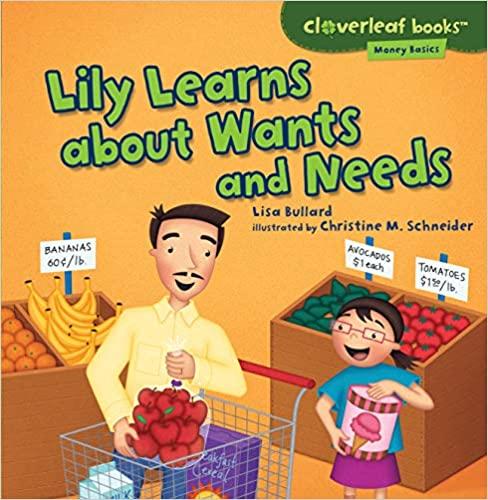
Author:
Lisa Bullard
Age:
For kids 7 and under.
Key Concept:
Wants vs. needs, choices
Story Summary:
Joey wants a lot of things and thinks he has enough money for all of it. When he realizes that he spent too much, he has to make choices and sacrifices to get the thing he really wants – to attend STEM camp.
Mom Review:
All financial literacy curriculums start with teaching kids to understand the difference between needs and wants. This book does a great job of giving realistic but fun examples of needs vs. wants. Lily tries to convince her dad that she needs a new bike since he wants her to spend more time outdoors. Dad does a good job explaining the difference. Best for kids 7 and under.
Kid Review:
I learned that needs are the things we need to survive. My brother says he needs a new fishing pole, but my mom says it is a want because we don’t eat the fish he catches. He has other fishing poles. I feel like I need a skateboard, but I know it is a want. A really big want.
Little Daymond Learns to Earn
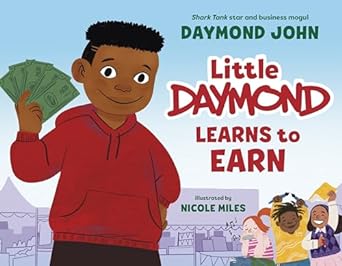
Author:
Daymond John
Age:
For kids 6 and up
Key Concept:
Entrepreneurship
Story Summary:
Little Daymond wants a poster of his favorite pop star, but he can’t afford one. With the help of his friends, Daymond figures out how to use the money he has to make more money and buy the poster.
Mom Review:
This is a fantastic book to introduce kids to the concept of entrepreneurship. It teaches core concepts in starting a business. Daymond’s mom tells him to “think about what you’re good at and how you can use that to solve a problem!” Daymond learns that it’s not as easy as it looks, and that he needs a little help from his friends to be successful. This book will get kids excited to start their own business, but also teaches that there are hurdles to be overcome.
Kid Review:
I gotta say it’s really good. I liked that he spent $1 on making a shirt and then he sold it for more. I learned that if you want something you should try to earn it. His friends helped him and they all shared the money.
DISCLOSURE: My First Nest Egg, LLC, is a participant in the Amazon Services LLC Associates Program, an affiliate advertising program designed to provide a means for sites to earn advertising fees by advertising and linking to Amazon.com.
